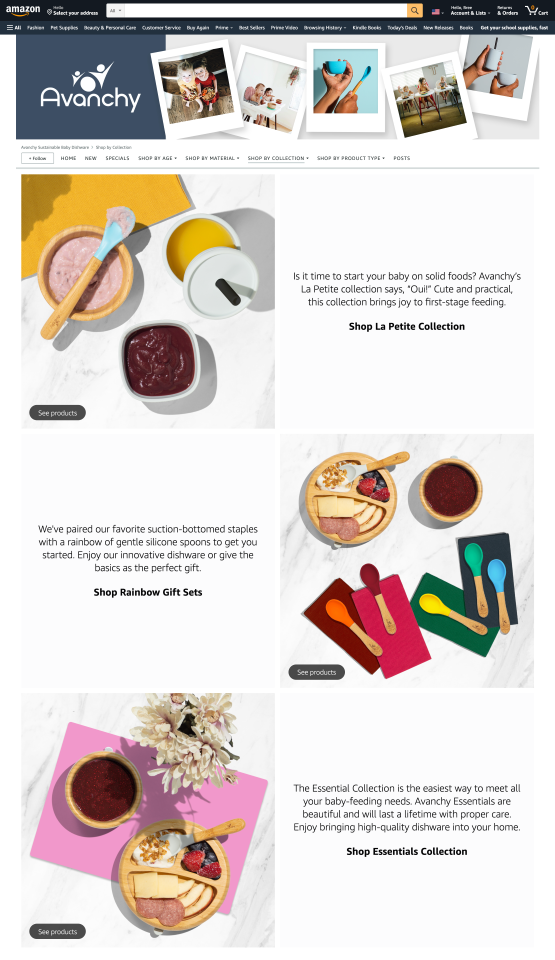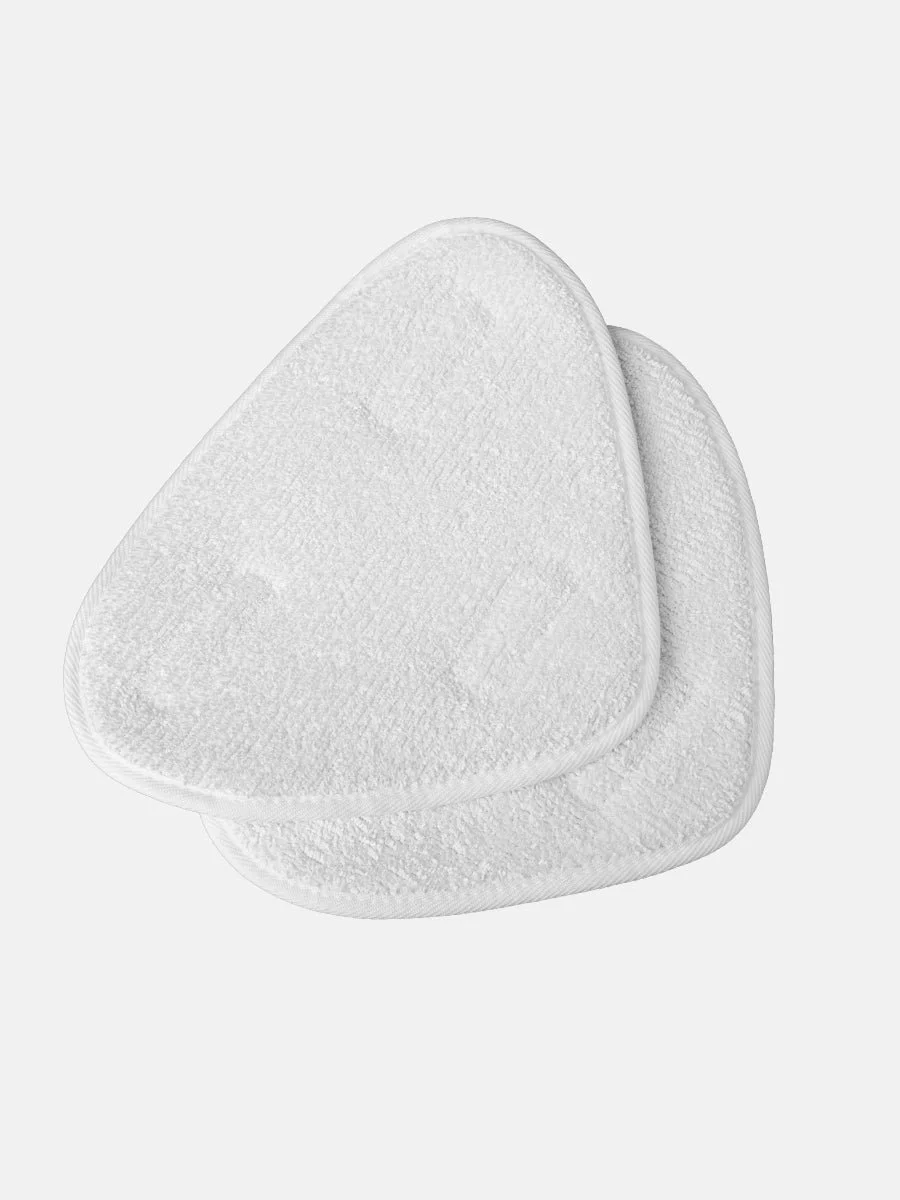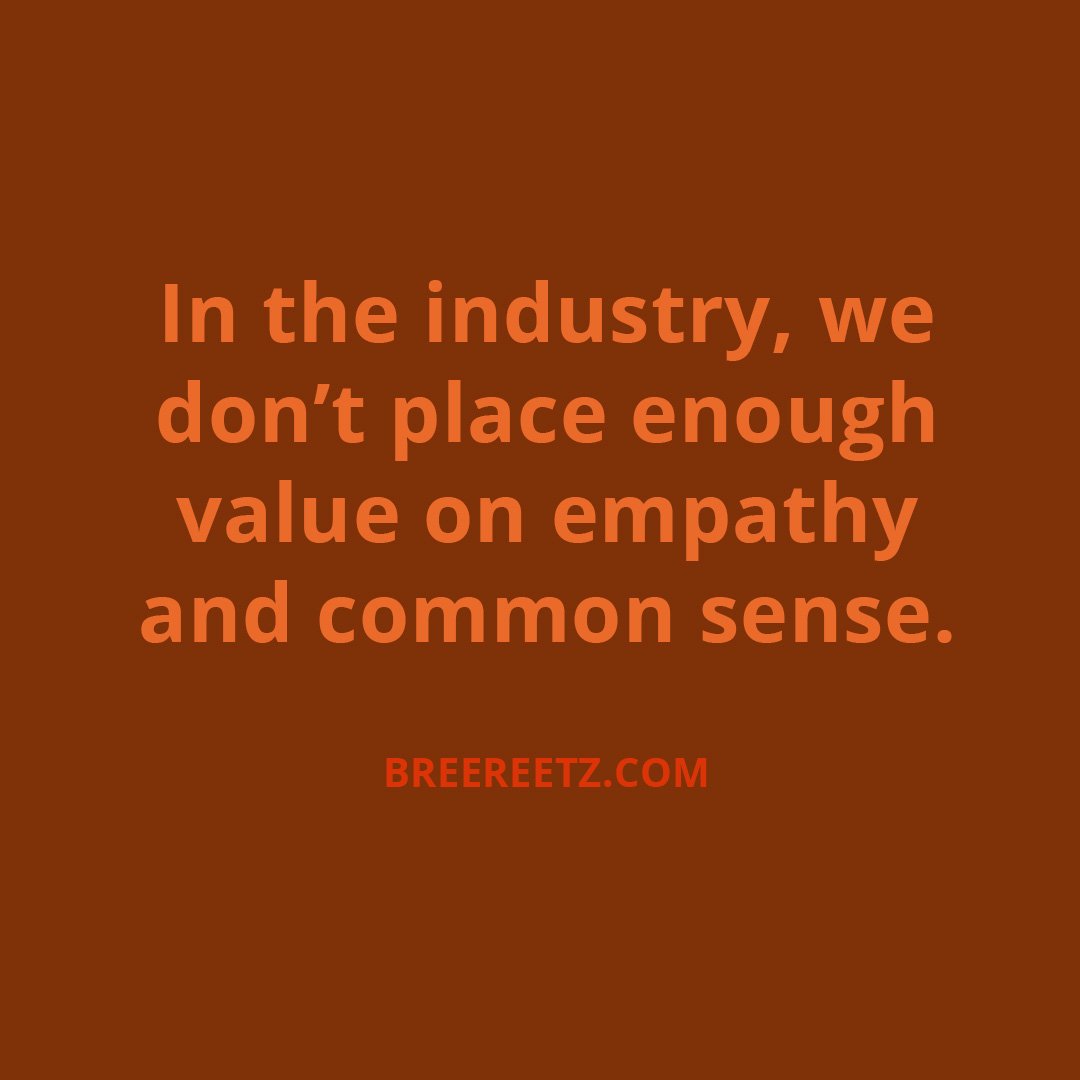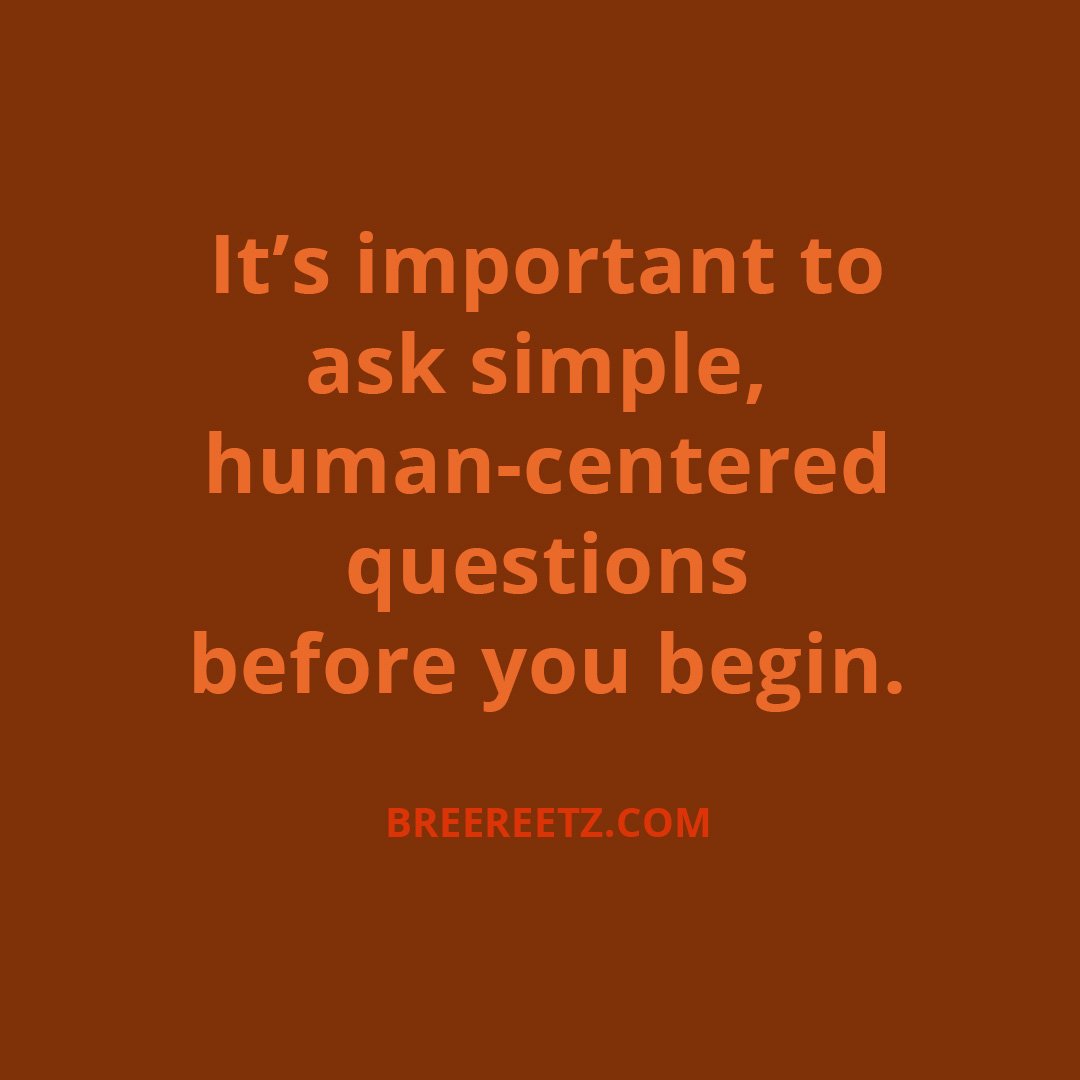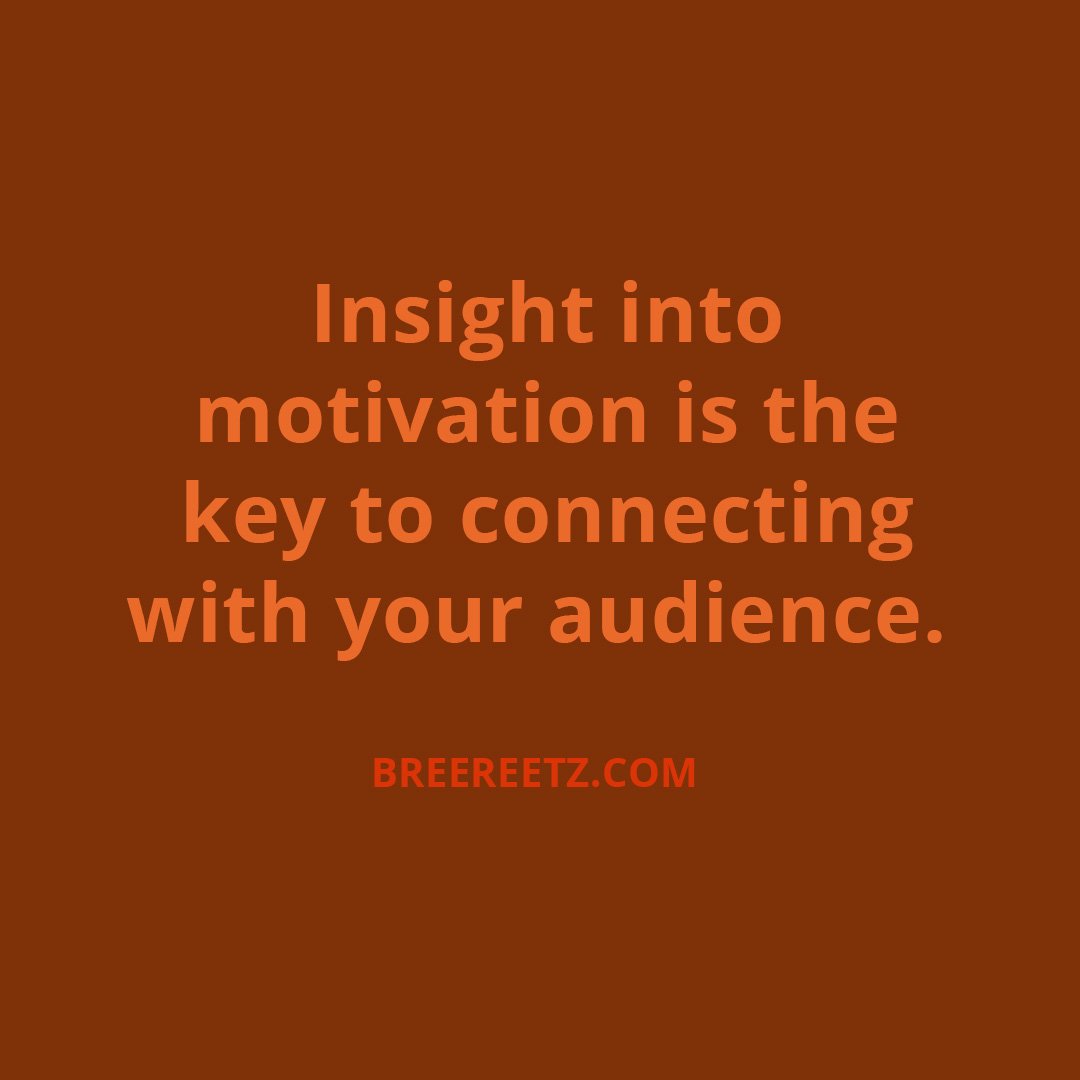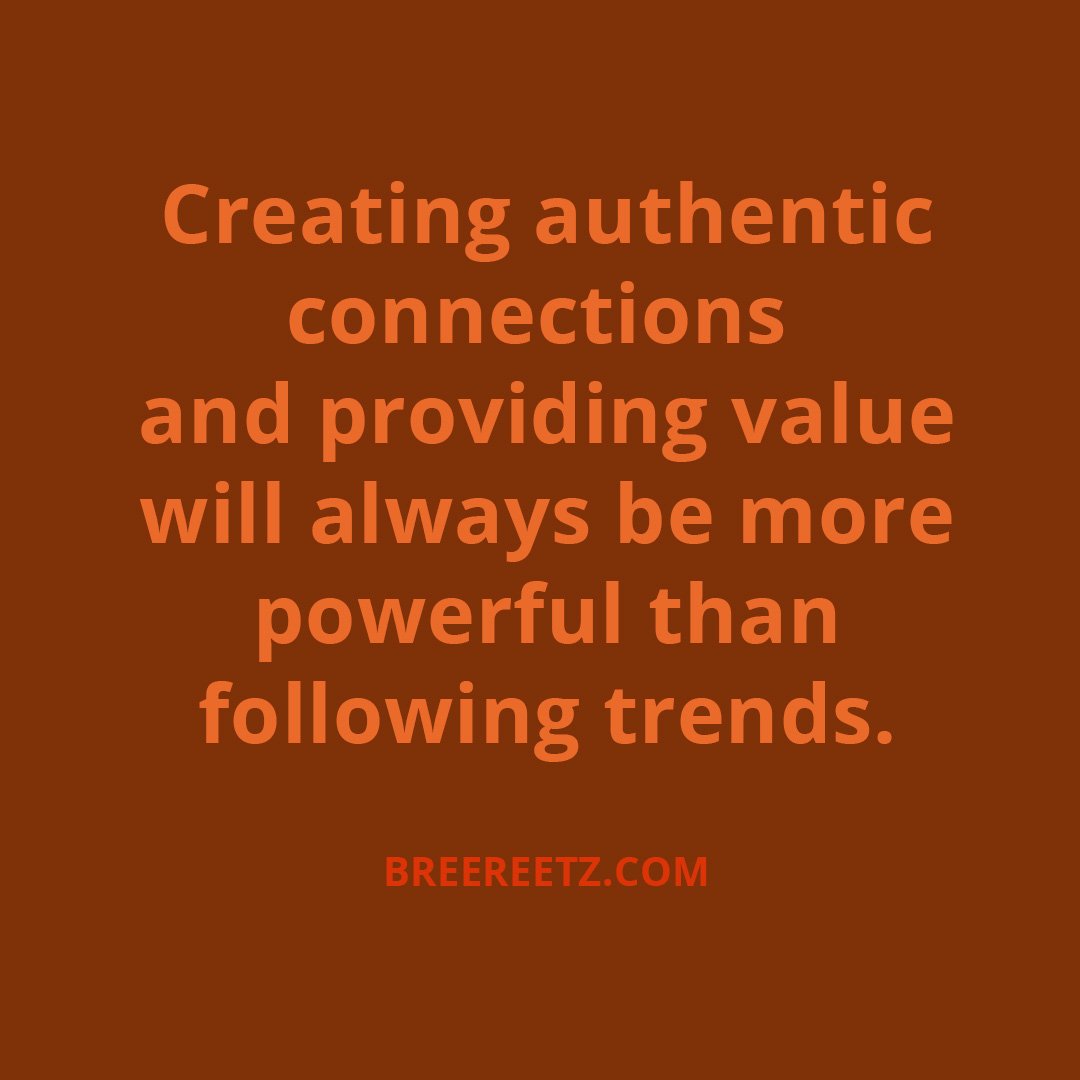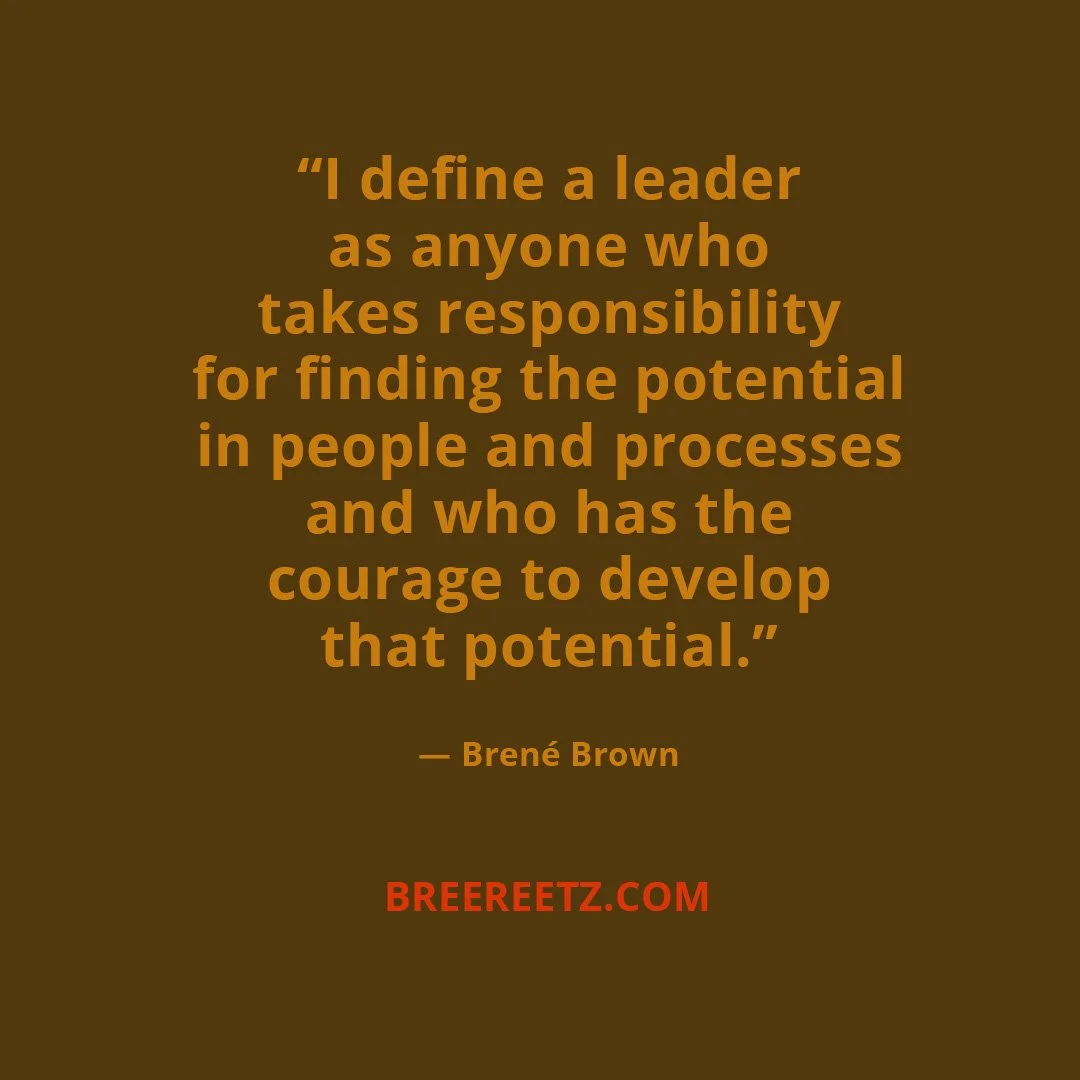Amazon Storefront Product Development
In this blog post I’d like to share some insights from my first Amazon Storefront design for Avanchy.
Looking at Avanchy’s existing structure, we saw that it wasn’t as effective as it could be. There were some obvious things missing from the original storefront design. Some of these things were already on the client’s radar. For example, the client knew they wanted to incorporate a ‘Specials’ page where users could always check back for specials and sales. The client also wanted to make sure that their new collection was featured in the navigation. We could have just implemented the clients requested changes and they would have been pleased. But, I saw untapped potential.
I put myself in the user’s shoes, and imagined the different intentions they may have while visiting this site. I identified that, they may visit often and want to know what’s new. They might be looking for a specials/sale. They might be trying to find products for a specific age range/feeding stage. They might be looking for a specific material. They might want to invest in a curated Avanchy collection as a gift or for themselves. Or they might be looking for a specific product type. These thoughts about the Avanchy user experience, informed my recommendations throughout the re-design.
Improving the structure was the foundation of my strategy to make Avanchy’s Amazon Storefront more shop-able and user-friendly.
-
• Home
• New Releases
• La Petite
• Suction Bowls
• Suction Plates
• First Stage Utensils
• Rainbow Gift Set
-
• Home
• New
• Specials
• Shop By Age (Drop-Down)
• Shop By Collection (Drop-Down)
• Shop By Product Type (Drop-Down)
I’m learning as I go.
In our new structure, I utilized drop-down menus to further organize content under each category. What I didn’t realize was that in organizing the content in this way, Amazon would automatically create a page for each category when a drop-down menu was created. I wasn’t initially planning to have a page for each category. Surprise, the scope of the project just expanded!
Although I didn’t set out with the vision of creating category pages for each drop down, it didn’t break the project. Using the principle of repetition, I represented to each sub-category with a shop-able product image, a text blurb, and a CTA that would bring users to that sub-category.
Category Pages
When you experience each category page side-by-side, it is easy to see how the repetition of alignment and tile type aid in comprehension and trust in the predictability of how each page will function across the site. This decision also meant that I was able to re-use images that I created for the home page, which increased efficiency as I didn’t have to create and export additional assets for all of the category pages.
Additional areas I set out to improve in the redesign:
-
A lack of consistency was an issue throughout the design. For example, text overlays appeared in any number of locations over the photos. This required your eye to bounce around to take in content. I wanted to streamline this experience so that users could effortlessly engage with the content as they scroll.
-
Creating engaging content was important in both senses of the word. Users would need to be able read and understand the content, yes. But they would also need to be able to easily interact with it. In fact, according to Amazon, each Tile (image, graphic, or text blurb) should support some level of action-oriented engagement whether it’s shopping directly or navigating to a shop-able page. I wanted to design a layout to support these different levels of engagement throughout the Storefront.
-
The original design incorporated a mixture of old and new assets. I had the unique opportunity of being able to update them all. I had access to beautiful photography, taken in-house by our team. And I wanted to use those assets to create composite images for each banner to add a whole new dimension of visual impact for the brand.
Enjoy what you’ve seen so far? Cool, so did the client!
The client said that when he showed it to his wife, she said “You’re the real deal now!” Providing this kind value for the people - this is what motivates me as a creative professional. I believe thoughtful design can make a practical difference for businesses like Avanchy.
Pulling Copy Out Of Thin Air
At work I’m part of a small but nimble creative department, as such I tend to wear a lot of hats.
One of the more surprising tasks that I consistently take on is copywriting. Whether it’s writing an email to a client, copy for one of the Creative Services pages on our website, or product descriptions for client projects - I know how to effectively communicate in writing.
Writing copy for Amazon A+ Content
When writing copy, it’s important to think about the context and the intended audience. In the top part of a product listing page it’s effective to have short and concise copy broken apart into digestible bullets for users who are scanning a page. But when it comes to writing for Amazon A+ Content, it’s best practice to write for different levels of engagement.
For example, I create punchy headlines for designed images that are easy to take in. But if a user has scrolled far enough to reach A+ Content, it’s equally possible that they’re more engaged. For engaged users, there’s an opportunity to paint a much more dynamic picture with words.
Imagine someone trying to dig deeper to find more information in order to make a decision between my client’s product and a competitor product. They’ve read the short bullet points summarizing the product features but they haven’t yet decided to buy.
What can effective copywriting do?
-
If they were shopping in person would someone touch the product in order to determine it’s quality? If so, using descriptive words to evoke a tactile sense of quality is essential.
-
Anticipating the questions a user might have allows you to write copy that centers the user experience in order to provide value by actually answering their questions while still speaking about the product.
-
Think about the reason someone might be shopping for this product. Speaking to the potential needs and desires of the audience is an effective way to keep content relevant.
These are the tactics I use to pull copy out of thin air.
And by that I mean turning a bare bones list into a paragraph of compelling product copy like I did for the the mop pads below.
Premium Daily Use
Mop Pads
-
• Washable
• Reusable
• Durable
• Absorbent
• Use with Steam and Go
-
Stock up on Premium Daily Use Mop Pads. Because you shouldn’t have to sweat the small stuff, that’s what a steam cleaner is for! Plush, super absorbent, and designed for daily use - these Premium Daily Use Mop Pads feature 3 velcro strips so that they can attach easily to the head of the Steam & Go Mop and make quick work of spills.
Add these durable, washable, and re-usable mop pads to your cleaning kit today - because it’s easy to reduce waste when you make smart choices.
Premium Scrubbing
Mop Pads
-
• Washable
• Reusable
• Durable
• Scrubbing strips help get tougher stains out
-
Take your cleaning kit to the next level with Premium Scrubbing Mop Pads, because life can be messy but your home doesn’t have to be. Use the Steam & Go Mop with the Premium Scrubbing Mop Pads to handle life’s sticky situations!
These microfiber Premium Scrubbing Mop Pads have all of the original features our customers love, plus specialized scrubbing strips to provide extra friction to help tackle tough messes without scratching surfaces!
These copy examples accompanied these product images and both products were shown side by side in a set of A+ Content designed to feature all Steam & Go accessories.
Talent Versus Skill
I had a natural aptitude for drawing at a young age.
Like many people who end up working in the creative industry, I was talented at expressing myself through a variety of creative mediums. My grandpa was a commercial artist and painter before me, and so we all figured it made sense, it was in my blood.
However, as an adult, thinking about people in terms of talent didn’t sit right with me.
I just didn’t have the words to articulate why until I heard Seth Godin talking about it in his book, The Practice.
“Talent is something we’re born with: it’s in our DNA, a magical alignment of gifts. But skill? Skill is earned. It’s learned and practiced and hard won. It’s insulting to call a professional talented. She’s skilled, first and foremost. Many people have talent, but only a few care enough to show up fully, to earn their skill. Skill is rarer than talent. Skill is earned. Skills is available to anyone who cares enough.” - Seth Godin, The Practice
This quote really resonated with me. Because at this point, it’s no longer talent or even education that is driving me and differentiating my work as a professional. It’s my willingness to show up, it’s my daily practice, it’s my care for my craft, it’s my care for other people and my values as a leader, it’s my unique point of view, it’s my ability to not only analyze the big picture but bring solutions to the table, and it’s my willingness to try and bring about positive change.
Although I do believe that earned skill is rarer than talent, it’s by no means exclusive. In fact, when coaching I think it’s essential to recognize that your team has the same potential to care, to show-up, to bring solutions, and to create change. For this reason, I frequently invite my team to look at the big picture with me, not just the polished vision but the real challenges we face. I see leadership potential in those who see those same challenges as opportunities, who search for ways to take ownership and make change. After all, there is no end to the work.
And there is no end to the practice, as long as we care enough to show up.
Empathy And Common Sense In The Design Industry
You don’t hear much about the role of skills like these in the design industry, but empathy and common sense are two of my strengths. I use these and other “soft” skills in almost every interaction I have as a creative leader. Doing so allows me to provide real value for both clients and employees. I was excited that Brand Strategist, Tim Maleeny touched on this topic in Episode 133 of The Futur With Chris Do Podcast. I’ve highlighted the parts of the conversation I really connected with, in my own words, in the carousel below.
Defining Leadership
“I define a leader as anyone who takes responsibility for finding the potential in people and processes and who has the courage to develop that potential.” - Brené Brown
This incredible definition of leadership is brought to you by Brené Brown. If you’re unfamiliar with her, feel free to just stop reading right now and navigate yourself to her work. I’m sharing her words here because I relate to this definition of leadership at my core.
Early in my career, I didn’t see myself as a leader because I didn’t have this kind of working definition for leadership. However, I would always end up wearing more hats than any formal job description ever articulated.
This was because I was taking interest, paying attention, and taking responsibility. I saw potential and I was putting in the work to develop it. This was happening way before I was offered a formal role in a leadership capacity. Because envisioning and influencing change that contributes to growth, efficiency, and efficacy thrills me. And I personally love sharing knowledge, information, and personal experience that empowers people. Which is part of why I’ll be sharing my thoughts as a leader in the creative industry on this blog as well.







